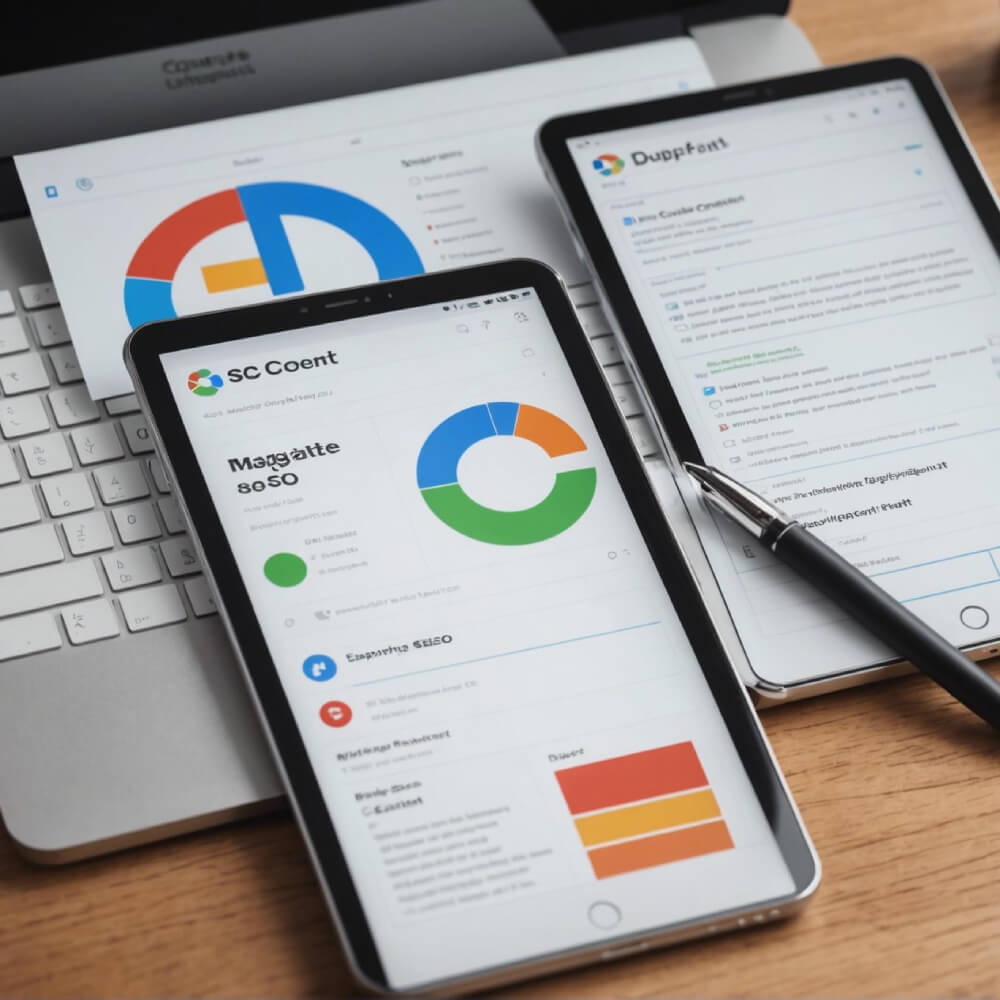This article talks about what duplicate content is, why it matters for search engine rankings and how people use websites.
We’ll also look at how to find duplicate content and what you can do to avoid it.
By making sure your content stays unique, you help it stay SEO-friendly.
What is Duplicate Content?
Definition and Examples
Duplicate content means having large parts of text that match or look a lot like text on other pages or sites.
This can show up as:
– Whole web pages
– Long paragraphs
– Small chunks of text
One example is when an online store uses the same product description on many pages. Another is when similar blog posts appear on various websites.
Also, printer-friendly versions of web pages without proper tags can cause search engines to see them as duplicates.
Types of Duplicate Content
There are two main types: internal and external.
Internal duplicate content happens within the same website.
Common causes include:
– Pagination
– Session IDs in URLs
– Different versions (HTTP vs HTTPS)
External duplicate content happens across different websites.
Examples include:
– Syndicated content
– Partner pages
– RSS feeds without proper tags or credit
Both types confuse search engines, leading to indexing and ranking problems. Properly identifying and fixing duplicate content is key for good SEO.
Why Duplicate Content Matters in SEO
Impact on Search Engine Rankings
Duplicate content can really mess up search engine rankings.
Search engines like Google want to show the best stuff to users. They do this by finding unique and helpful content. When Google sees duplicate content, it gets confused and doesn’t know which one to show.
- This confusion can make both pages rank lower.
- Sometimes, Google won’t even show multiple copies, meaning fewer people see them.
Also, websites with duplicate content might get small punishments from search engines, making their performance worse.
User Experience Considerations
Duplicate content is bad for people visiting your site too.
Imagine looking for new and exciting info and finding the same thing on many pages. This can make you leave the site fast and never come back.
When users see the same text over and over:
- They get frustrated.
- They might leave quickly, ruining your bounce rate.
Also, people may think your website is unreliable if they see the same content somewhere else. They might not trust your website and won’t return or buy anything. Making sure your content is unique and useful keeps visitors happy and builds a good relationship between them and your site.
How to Identify Duplicate Content
Tools and Techniques
Identifying duplicate content requires both special tools and some manual work. Some helpful tools include Copyscape, Siteliner, and Screaming Frog SEO Spider.
- Copyscape: Checks for similar content on the internet to find external duplications.
- Siteliner: Looks inside a website to find repeated content and provides a detailed report.
- Screaming Frog’s SEO Spider: Crawls your whole site to spot similar content, meta tags, and duplicated URLs.
Another good tool is Google Search Console, which alerts webmasters about duplicate meta descriptions and titles. These tools make detection faster, helping identify and fix issues quickly.
Manual Checks
Using tools is great, but doing some manual checks is important too. Here are some ways:
- Search for text snippets in Google using quotation marks to spot duplicates on other pages.
- Check URL structures, titles, and meta descriptions for repetition.
- Look for boilerplate information that’s reused across multiple pages.
Combining these manual methods with automated tools provides a thorough approach, ensuring the site stays optimized for search engines.
Best Practices to Avoid Duplicate Content
Canonicalization
Canonicalization helps search engines know which version of a webpage is the main one.
By using canonical tags, website owners can show the main URL for a piece of content, stopping duplicate content problems.
This is very helpful for e-commerce sites with many pages for similar products or different filters.
Tools like Google’s URL Inspection Tool can check if canonical tags are set up correctly.
Making sure canonical tags are accurate and the same on all pages is very important for good SEO.
301 Redirects
301 redirects help fix duplicate content issues that happen when URLs change or web pages combine.
They tell search engines that a page has moved permanently to a new spot and transfer link equity, avoiding duplicate content.
For example, if two pages have similar content, one can be redirected to the other using a 301 redirect.
This practice brings together ranking signals and keeps search engine authority.
Setting up 301 redirects correctly can stop people from getting to old URLs, making sure users and search engines go to the right content easily.
Unique Content Creation
Making unique content is the best way to avoid duplicate content issues.
Each page should have different and valuable information.
For bloggers, it’s important to write original articles and not copy from other places.
In an e-commerce setting, writing custom product descriptions instead of using the manufacturer’s text can set the site apart.
Regularly checking site content ensures it stays original.
Using editorial calendars and clear content rules can make creating unique content easier, leading to better user experiences and higher search engine rankings.
Wrapping Up: The Importance of Unique Content
They need to prioritize unique content to avoid SEO penalties and enhance user experience.
Duplicate content confuses search engines and reduces ranking potential.
By employing tools to identify duplicates and best practices like canonical tags, 301 redirects, and creating custom content, they ensure better visibility and user engagement.
Consistent evaluation and improvement keep their content distinct and valuable.



